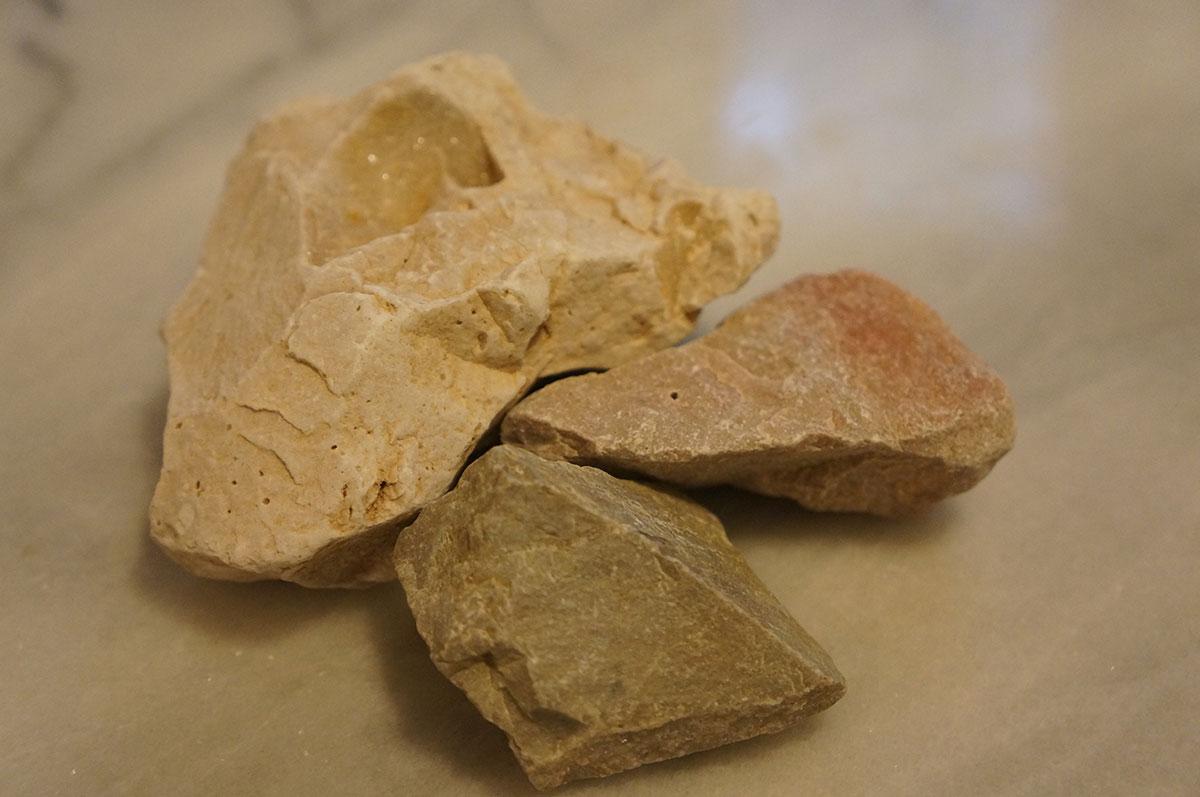The Fascinating Rock of Dolomite

Formation of Dolomite
Dolomite is a carbonate mineral composed primarily of calcium magnesium carbonate. It forms in sedimentary deposits where alternating layers of limestone and layers rich in magnesium accumulate over time through biological or chemical processes. For dolomite to form, the limestone deposits must interact with magnesium-rich waters either underground or at the Earth's surface. As groundwater circulates through the limestone, it dissolves some of the calcium carbonate and replaces it with magnesium, gradually altering the mineral composition. This process of dolomite formation requires millions of years to complete as magnesium ions slowly substitute for calcium in the calcite crystal structure.
Properties and Composition
Dolomite has a distinct rhombohedral crystal structure that gives individual crystals their characteristic rectangular shape. On a molecular level, it contains equal amounts of magnesium and calcium carbonate (CaMg(CO3)2). Compared to calcite, Dolomite is slightly harder with a Mohs hardness of 3.5-4. Its color ranges from white to gray to pink depending on the presence of foreign elements in the crystal. Dolomite also tends to be less soluble than calcite, making it more resistant to erosion once formed. Other common impurities that can alter its appearance include iron oxide which produces yellow, brown or red colors.
Occurrence and Uses
Dolomite is widespread across the globe as it forms under the right geological conditions. Major dolomite deposits are found in Hungary, France, Germany, Italy, Spain and China. In the United States, large quantities exist in the Appalachian Mountains and Michigan. Due to its abundance, dolomite has a wide variety of commercial and industrial applications. As a construction material, it serves as an aggregate in road building and can be cut into decorative slabs for countertops or floor tile. Dolomite also acts as a soil conditioner to reduce acidity and provides an important source of magnesium. Its high concentration of calcium magnesium carbonate makes it useful for producing bricks, cement and glass. In the steel industry, dolomitic limestone functions as a flux that helps remove impurities. Agriculture depends on dolomite as a soil amendment and livestock feed supplement.
Dolomite in Natural Landscapes
Dolomite formations contribute significantly to many scenic landscapes. The dolomite Alps stretching across Austria, Germany, Italy and Slovenia feature towering rock walls and cliffs carved by glacial erosion. In the United States, rock climbers prize the steep slopes and arêtes of Shawangunk Ridge in New York which owes its dramatic topography to underlying dolostone beds. On the continental scale, the Canadian Shield exposes some of the world's oldest dolomite dating to between 1-2.5 billion years ago. Erosional forces have sculpted the bedrock into rugged outcrops, rounded hills and picturesque fjord-filled coastlines. The dolomitic limestone of Naracoorte Caves in Australia provides the unusual geological conditions for some of the finest cave paintings left by indigenous populations. In each location, ancient deposits of calcium magnesium carbonate endure as prominent features that continue shaping the environment.
Fossil Replacement
Due to its substitutive crystal formation, dolomite has replaced fossils during the recrystallization process. Such fossil ghosts preserve the original shape and structure of skeletal remains but lack fine textures or organic material. Early microbes and algae are among the simplest life forms commonly replaced by dolomite following burial. For larger shelly invertebrates like brachiopods and corals, entire original calcite skeletons may transform completely into calcium magnesium carbonate over extended periods. Shellfish, trilobites and fish fossils show distinctive three-dimensional replacements. Even mammal bones occasionally undergo fossilization through dolomitization, cementing the organism's historical role as a substrate for chemical alteration. By preserving unique patterns that replicate living tissues, these fossilized relics offer telling morphological clues about ancient life despite losing physical remains over eons of alteration.
Economic Significance
As one of the most widely distributed non-fuel minerals, dolomite has long supported economic prosperity worldwide. Canada, China and the European Union represent leading dolomite producers, but deposits occur globally to provide a versatile industrial resource. In 2011, the total dolomite market value was estimated at $17 billion USD with an annual growth rate around 3-5%. The cement and construction aggregates industry consumes over half of global dolomite production, reflecting ongoing infrastructure expansion. Agricultural liming helps drive demand in fertile regions, and industrial chemicals manufacturing relies on dolomite for its refractory, flux and fluxing qualities. Overall, the versatile physical properties and chemical reactivity of this geologically abundant carbonate underpin a diverse set of applications and ensure ongoing commercial importance matching its prevalence across natural landscapes. After millennia shaping the planet, dolomite’s influence on industry and technology now sustains global economies.
Get more insights on Dolomite
- Art
- Causes
- Crafts
- Dance
- Drinks
- Film
- Fitness
- Food
- Jeux
- Gardening
- Health
- Domicile
- Literature
- Music
- Networking
- Autre
- Party
- Religion
- Shopping
- Sports
- Theater
- Wellness
- IT, Cloud, Software and Technology


